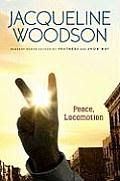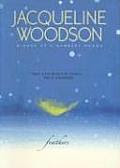
I just read
CYCLE OF RICE-CYCLE OF LIFE by Jan Reynolds. This is a longer nonfiction book, meant for older elementary and middle school students. The photos throughout the book are stunning and make this a very engaging book.
This book is not an easy one if you are not familiar with farming and production. But I so glad that I took the time to read it from cover to cover. I learned so much. On the island of Bali, a community has an amazing system for growing rice--one that involves everyone in different ways, one that understands the natural cycles of the earth, and one that connects to the spiritual lives of the people. For a very long time, this system has been incredibly successful and has been able to sustain. The first part of the book explains this system, how it works, all of the components. The author helps us to see how much the farming of rice and the people of the community are connected. Then we learn that because of the success of the system, the government decided to make it even more successful by interfering with the natural cycles and by spending lots of time and money to improve the system--interfering with many of the important things that made it successful. The last part of the book shares the work of J. Stephen Lansing, an American anthropologist who helped share information that helped Bali reinstate the original system.
This is an amazing story--one that helps us see more than the story of Bali and rice but also the importance of community, the ways in which we are clearly a global society and the ways in which new technologies do not always make things better. This is not an easy text but it is one that I am excited to share with kids. There is a lot to learn and a lot to think about. Whether it is a topic that is new to you or one that you are familiar with, this is a great read.
I have been thinking a lot about nonfiction books for middle grade readers. As I have gone through the nonfiction section of our school library, it has become more obvious how nonfiction has changed in the last 20 years. For so long, nonfiction for children was almost nonexistent. The books were very encyclopedia-like and not really that much different from the actual encyclopedias. But then we started to get some quality books, written specifically for kids. One pattern I noticed later was that so many of the books that are in our library are on more of a "magazine" style--with photos, captions, etc. spread out all over the page. I realized that kids were spending lots of time with these books but were having trouble gathering information from them because of the volume and variety of information. So, I have been on the lookout for nonfiction books that can be read to cover to cover.
I think if we think about our students and the types of content reading they will be doing in their lives, depending on their fields of study, sharing great nonfiction with them is hugely important. I will be honest, this book was not an easy one for me to understand. I read it through once to get the general idea of the concepts described. I read it a second time to pick up more of the content details. At first I couldn't imagine reading this book to elementary students but then I realized that so much of our nonfiction reading is about working through topics that are new and interesting to us. After having spent time with the book, I think it would be a perfect book to share with students--to think and wonder though together, to go back to adding more information than during the first read. A great book and a great message for everyone.




















